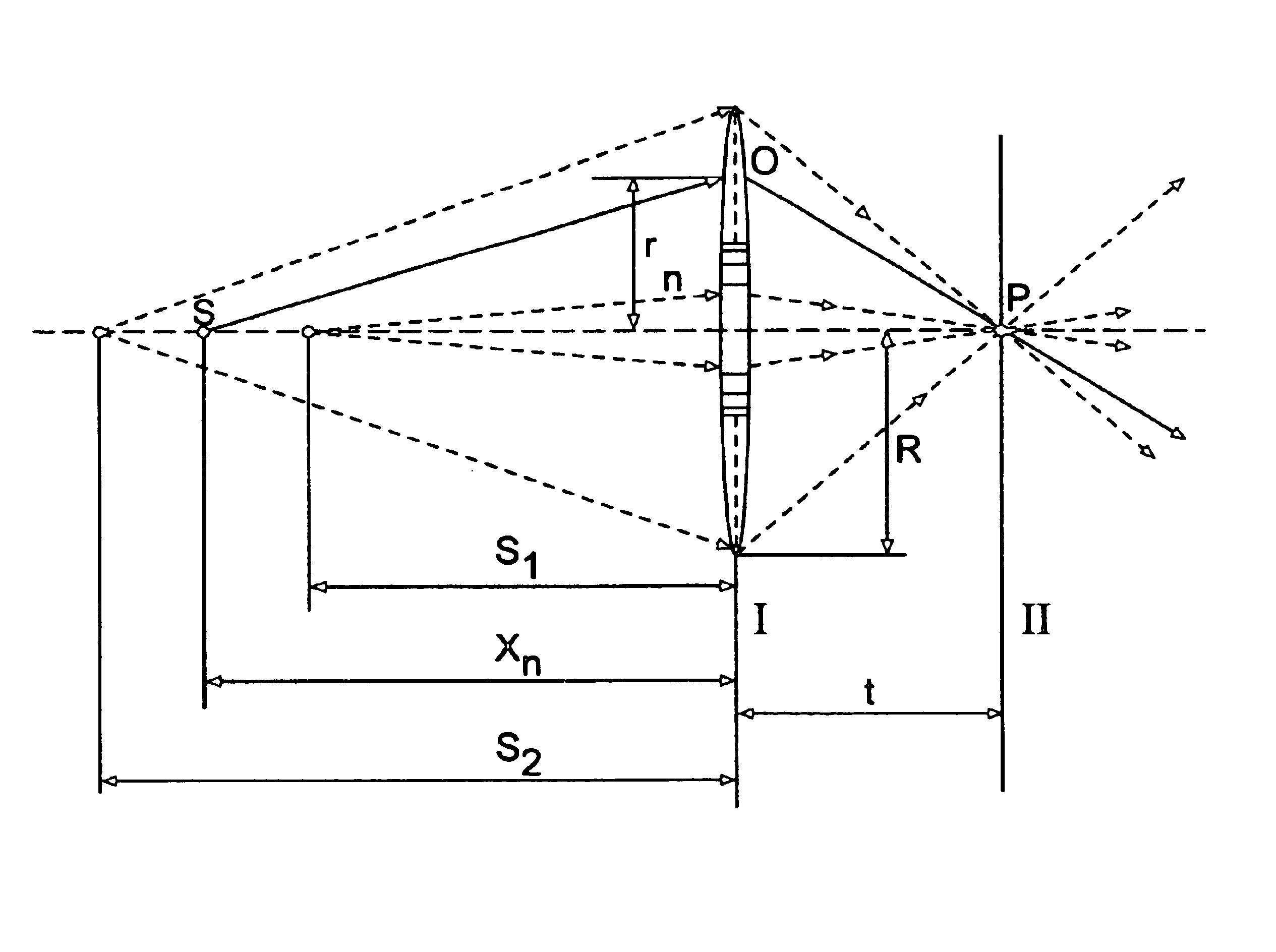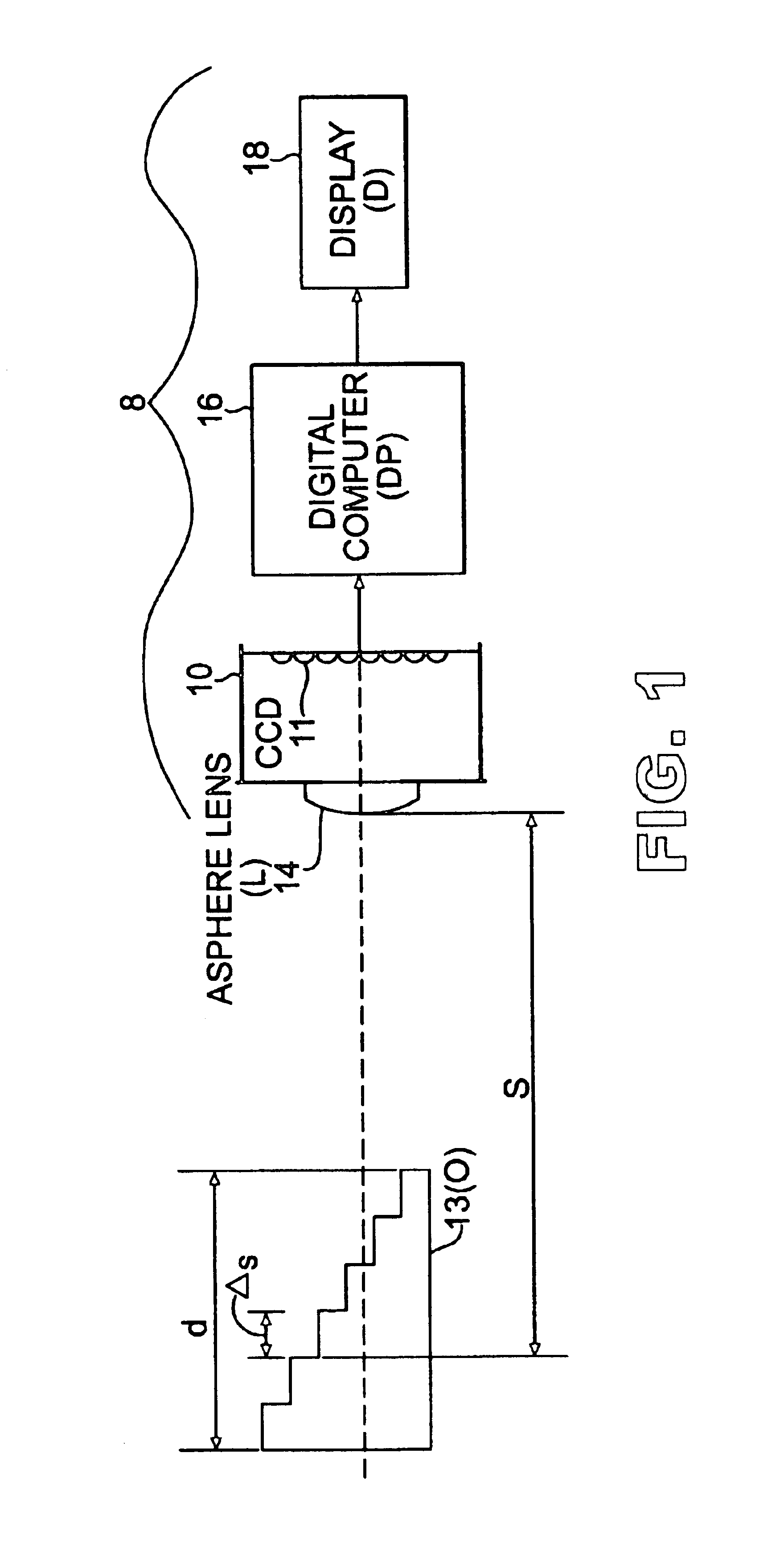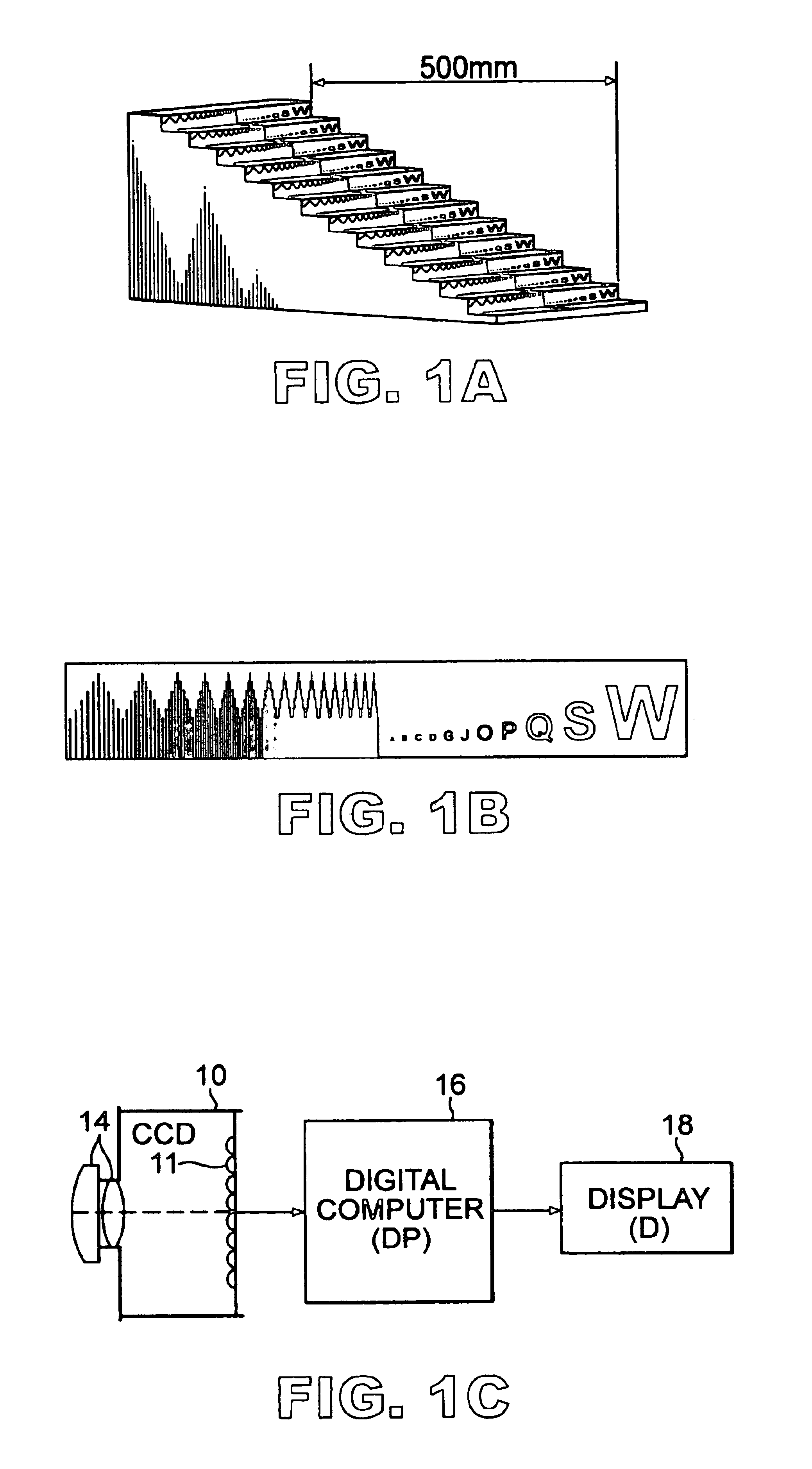Imaging using a multifocal aspheric lens to obtain extended depth of field
- Summary
- Abstract
- Description
- Claims
- Application Information
AI Technical Summary
Benefits of technology
Problems solved by technology
Method used
Image
Examples
Embodiment Construction
[0037]Referring to FIGS. 1 and 1A, an integrated imaging and processing system 8 is shown having a digital camera (or image capturing unit) 10 with a CCD array detector 11 for capturing images of an object 13 through a multifocal lens 14. The multifocal lens 14 represents a circularly symmetric lens with a focal length that various continuously with radius, so that for a 3-dimensional object or objects, over a desired distance range there is always an annular portion of the lens that provides a sharp in focus image, and the remainder of the lens contributes to blurring. Such a lens 14 represents an aspheric lens, and is hereinafter referred to as logarithmic asphere lens 14, and was designed using the Fermat's principle to find the transmission function for a lens that will image an extended portion of the object-optical-axis into a single image point. For purposes of illustration the object 13 is shown as a single three-dimensional object, such as a staircase, but object 13 may rep...
PUM
 Login to View More
Login to View More Abstract
Description
Claims
Application Information
 Login to View More
Login to View More - R&D
- Intellectual Property
- Life Sciences
- Materials
- Tech Scout
- Unparalleled Data Quality
- Higher Quality Content
- 60% Fewer Hallucinations
Browse by: Latest US Patents, China's latest patents, Technical Efficacy Thesaurus, Application Domain, Technology Topic, Popular Technical Reports.
© 2025 PatSnap. All rights reserved.Legal|Privacy policy|Modern Slavery Act Transparency Statement|Sitemap|About US| Contact US: help@patsnap.com



